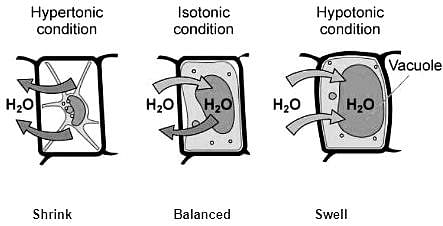BPSC Prelims Mock Test - 1 - BPSC (Bihar) MCQ
30 Questions MCQ Test BPSC Prelims Mock Test Series & Past Year Papers 2024 - BPSC Prelims Mock Test - 1
Which department focuses on GST audits and enforcement against tax evasion in Bihar?
Which of the following statement is not true regarding the Mahalwari system?
| 1 Crore+ students have signed up on EduRev. Have you? Download the App |
Which of the following were reasons for the growth of militant nationalism in India?
Which of the following are the functions of urban local governments?
I. Maintenance of health institutions
II. Maintenance of markets
III. Public vaccination
IV. Water supply
Which of the following is NOT an instrument of the monetary policy of the Reserve Bank of India?
If cells are kept in some solution and the net result is that the cell swells up, then the solution is ______.
Which law states that "If no external force acts on a system of bodies, the total linear momentum of the system remains unchanged"?
Which one of the following fibres is also known as cellulose regenerated fibre?
The letters from A to Z are numbered from 1 to 26 respectively. If HEAL = 103310 and NILE = 167143, then what is KITE equal to?
Which of the following ministries will launch the Samudrayaan Mission in 2026?
The Mukhyamantri Balika Cycle Yojana in Bihar is implemented by which among the following ministry?
Consider the following statements.
- The first radio station in Bihar was established in 1978.
- The first television station in Bihar was set up in 1948.
- Patna has both radio and television centers in Bihar.
Select the correct statement from the given.
Paleolithic evidences are found in which of the following places of Bihar?
During the freedom movement who among the following founded Kanya Swyam Sevika Dal in Bihar?
The Hindu Widows' Remarriage Act was enacted in which year under the East India Company rule?
Who among the following is associated with the book "The Golden Threshhold"?
Which of the following pass is located in Himachal Himalaya?
The first estimation of poverty in India was made by :
The term 'pseudopodia' is related to which one of the following organisms?
Half life period of first order reaction is 20 minutes. How long will it take to 75% completion?
Which of the following is not part of the Bihar plain?
DRDO was made by the amalgamation of which of the following organisations?
A trader mixes three varieties of groundnuts costing Rs. 50, Rs. 20 and Rs. 30 per kg in the ratio 2 ∶ 4 ∶ 3 in terms of weight, and sells the mixture at Rs. 33 per kg. What percentage of profit does he make?
In support of Lahore Resolution of Muslim League the Bihar branch of Muslim League observed Pakistan Day in different parts of Bihar on?
Recently 10-Point Peace Plan has been in news. It has been proposed by which of the following nation?
In January 2023, which state launched the first survey of migrants?
|
3 docs|29 tests
|
|
3 docs|29 tests
|



















